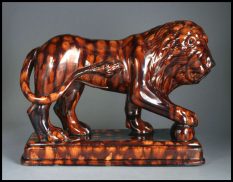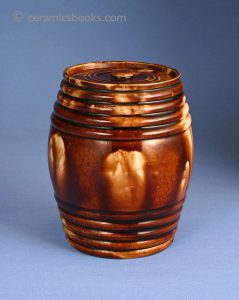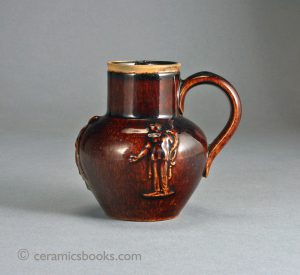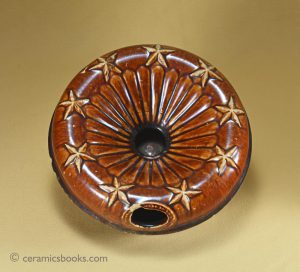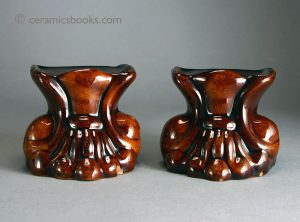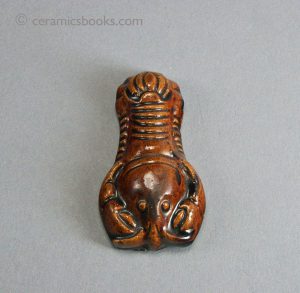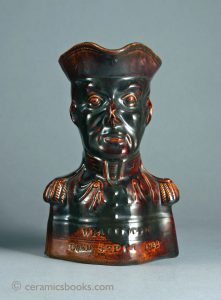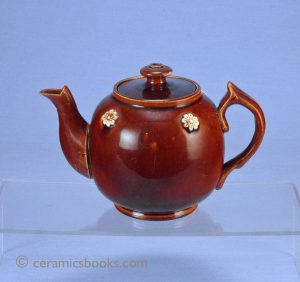Treacleware (or 'Rockingham' glaze ware)
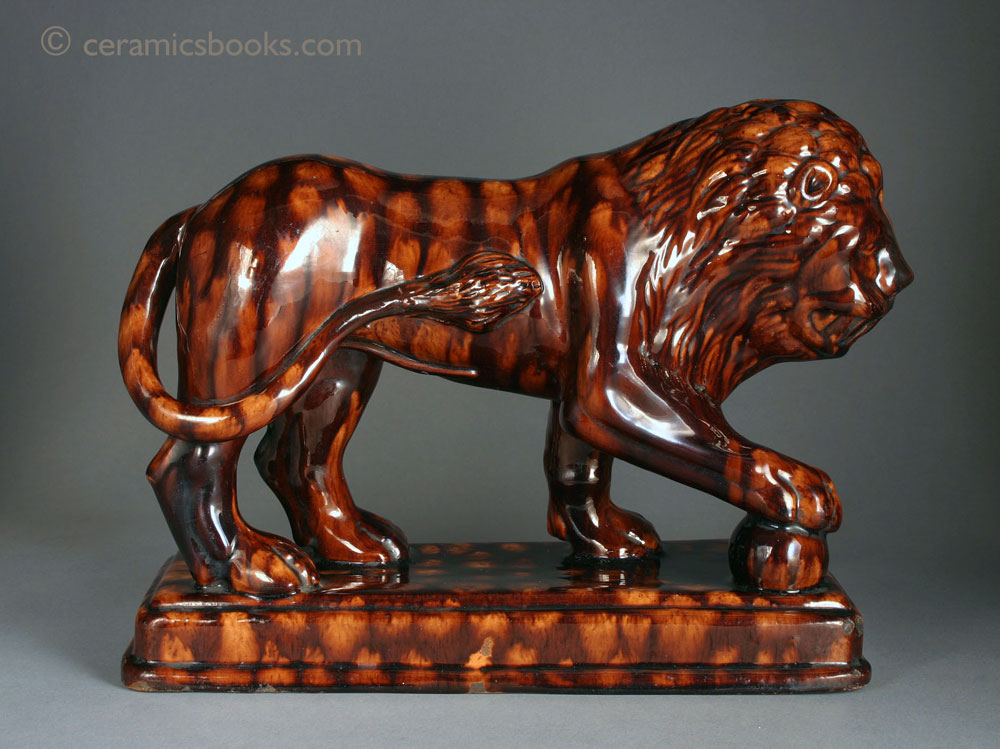
Treacleware, or ‘Rockingham’ brown-glazed ware, includes a wide number of variations. They are earthenwares that have a brown glaze that is generally fluid and translucent to some degree. The variations in treacleware include two-
The Swinton factory, Yorkshire, gave the name Rockingham to their refined brown-
Iron oxide and manganese dioxide have been used to produce brown and purple-
American treacleware or Rockingham and Flint enamel wares are often based on English originals but have a distinctive character of their own. The Bennington, Vermont factories are the most famous in the USA but other centres produced it too.
